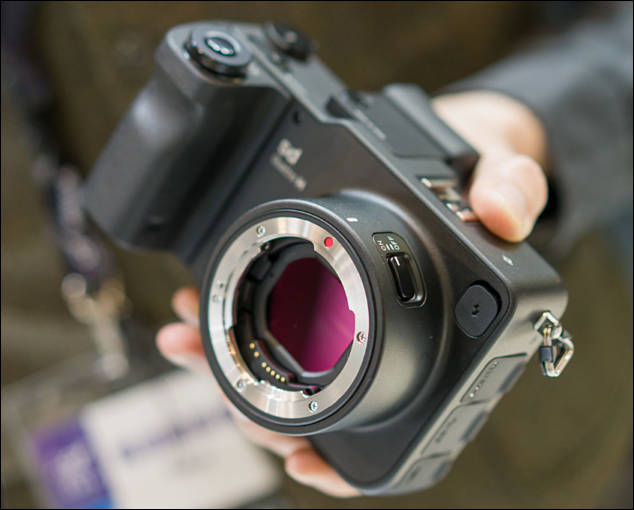
-
Sigma has announced development of two new mirrorless "SLR-type" cameras that accept Sigma SA mount lenses
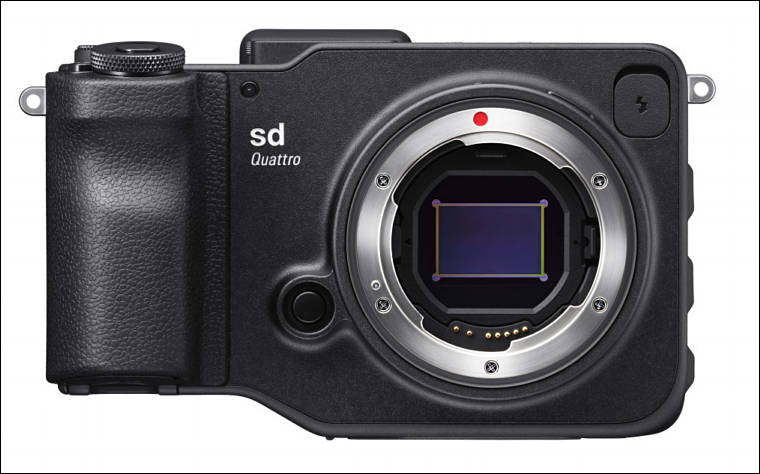
Both cameras feature a Foveon sensor, and Sigma SA lens mount to accept Sigma SA (DSLR) lenses. There is a high resolution electronic viewfinder (EVF) on the rear, along with a wide screen. The two models both have Foveon sensors, with the Quattro H featuring a larger APS-H 1.3x crop sensor, and the Quattro features an APS-C 1.5x crop sensor.
Sigma has also announced a number of optional accessories, including a battery power grip (PG-41), with 200% more shooting time, an electronic flash (EF-630) with S-TTL automatic metering, a flash USB dock (FD-11) to enable firmware updates for the flash, and a cable release (CR-31).
Release date and price is yet to be confirmed.
Sigma sd Quattro Features
- Dual TRUE III image processor
- New Super Fine Detail exposure mode
- Combination of Phase detection AF and contrast detection AF
- Focus peaking function
- 2.36m dot electronic viewfinder (EVF)
- 3.0inch 1.62m dot screen
- Magnesium alloy body
- Dust and splashproof design
- Quick set menu
- 14-bit RAW data
- In-camera RAW processing
- Higher precision white balance (new algorithm)
- Colour modes, Monochrome options
- Custom bracketing display
- Electronic level
- USB3 port
Available at https://www.amazon.com/Sigma-Digital-Camera-Black-ZL900/dp/B01HHR572O/
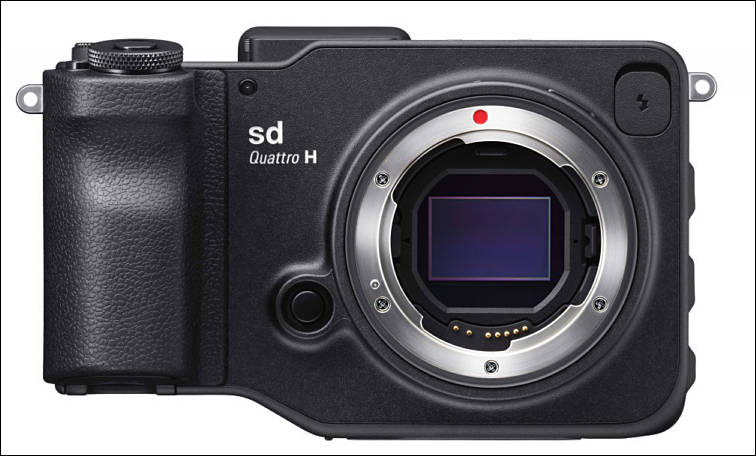
Sigma sd Quattro H features
- 45 megapixel total pixels (25.5 megapixel top layer)
- 51 megapixel max image size
- APS-H Foveon sensor (26.6x17.9mm)
- 1.3x crop
- 3.8fps up to 10 images
- 5.1fps with Low image size (20 images)
-
PR
Sigma Corporation of America, a leading camera, DSLR lens, flash and accessories manufacturer, today announced the new high-performance, compact Sigma sd Quattro and Sigma sd Quattro H mirrorless camera systems with Foveon Quattro sensors. The Sigma sd Quattro features an APS-C sized sensor and the Sigma sd Quattro H touting a larger APS-H sized sensor for even greater image quality. Thanks to the mirrorless aspect of the cameras, both the sd Quattro and sd Quattro H are designed to take full advantage of all Sigma Global Vision lenses.
“With the introduction of these two new cameras, Sigma continues its rich history of innovation. The Foveon sensor is renowned for its imaging characteristics, and the mirrorless interchangeable format offers photographers the full line of Sigma Global Vision lenses to help realize their creative visions,” stated Mark Amir-Hamzeh, President of Sigma Corporation of America. “The sharpness of detail and nuanced color tone captured by the Foveon sensors is a key component of Sigma Global Vision. The sd Quattro, and the sd Quattro H, with the newly announced Foveon Quattro APS-H sensor, will be greatly appreciated by photographers who demand the utmost in imaging purity, with the added benefit of portability for both in-studio and on-location photography.”
Both the sd Quattro and sd Quattro H feature similar design aspects with a compact form consistent with the dp Quattro line, making them highly portable and utilizing the Foveon Quattro sensor for exceptional imaging quality and fast processing. A magnesium alloy body makes the sd Quattro and sd Quattro H durable and rugged, while a dust- and splash-proof design makes it ideal for photographers facing harsh conditions. In addition to the new body design, both cameras boast a list of useful advancements. These include a two-mode Autofocus detection that combines Phase Detection for focus speed and Contrast Detection for focus accuracy. The focus settings have also been enhanced with such modes as Movement Prediction, Face Detection, Free Movement, Focus Peaking and a variety of others. The new 2.3 megapixel viewfinder displays close to 100% of the field of view and when placed in “Auto” will toggle between the viewfinder when the user has the camera to their eye and then to the LCD when the user lowers the camera. A new “Super-Fine Detail” mode brings out the full potential of the Quattro sensor by capturing seven different exposures with one shot and merging them for exceptional dynamic range (images can be extracted individually as well). Meanwhile an updated algorithm for the Auto White Balance allows for greater accuracy, even with multiple light sources.
While the sd Quattro and sd Quattro H are similar in physical design details, they stand apart when their Foveon sensors are compared. The sd Quattro utilizes the same sensor found in the dp Quattro line and produces image quality comparable to that of a 39 megapixel Bayer-pattern sensor on resolution testing. The stacked silicon Foveon Direct Imaging sensor captures all detail information on the top 19.6 megapixel layer along with all color information for the Blue channel, while the two five-megapixel layers below capture Red and Green color information, all without the need for a low pass filter. Merged together they create incredible image quality that is comparable to medium format files. The sd Quattro H boasts a larger APS-H sensor (26.6x17.9mm) than the sd Quattro and can produce images equivalent to that of a 51-megapixel Bayer-pattern sensor camera on resolution testing. The sensor structure is similar to that of the sd Quattro but uses a 25.5 megapixels on the top layer of the sensor that captures the detail information. Both cameras use the latest Dual TRUE III image processor and take full advantage of the Art, Contemporary and Sport line Global Vision lenses that are made for high megapixel cameras. Like all Sigma Cameras, RAW (X3F) data can processed via Sigma Photo Pro, which offers editing options, including Monochrome mode to take advantage of the incredible monochrome images the Foveon sensor captures.
-
The DP Quattro is likely to ship before summer. The SD Quattro H will launch before the end of the year.
-
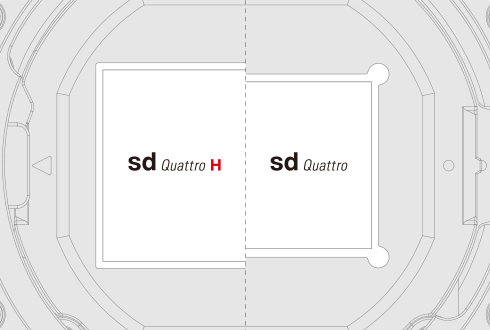
Sigma SD Quattro
- Angle of View: Equivalent to approx. 1.5 times the focal length of the lens (on 35mm cameras)
- Sensor Size: 23.5×15.5mm (0.9 inch×0.6inch)
- Effective Pixels: Approx. 29MP
T(Top): 5,424×3,616 / M(Middle): 2,720×1,808 / B(Bottom): 2,720×1,808 Total Pixels: Approx. 33MP
Sigma SD Quattro H
- Angle of View: Equivalent to approx. 1.3 times the focal length of the lens (on 35mm cameras)
- Sensor Size: 26.6×17.9mm (1.0 inch×0.7 inch)
- Effective Pixels: Approx. 44.8MP T(Top): 6,200×4,152 / M(Middle): 3,348×2,232 / B(Bottom): 3,348×2,232 Total Pixels: Approx. 45MP
-
The SD Quattro cannot record video because the Foveon sensor has too much data to process.
-
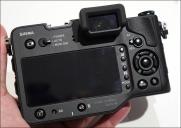
 img307.jpg800 x 565 - 60K
img307.jpg800 x 565 - 60K -
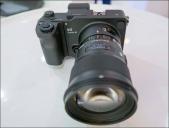
 img20.jpg773 x 585 - 38K
img20.jpg773 x 585 - 38K -
Sigma Corporation of America, a leading camera, DSLR lens, flash and accessories manufacturer, today announced the pricing and availability of the sd Quattro camera along with a new bundle including the sd Quattro and 30mm 1.4 DC HSM Art lens, as well as pricing for the new Sigma EF-630 external flash. The Sigma sd Quattro features an APS-C sized sensor and a redesigned mirrorless system among other advancements, and will be available in July for the street price of $799 USD.
-
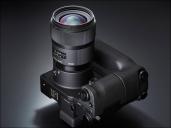
 img695.jpg790 x 592 - 42K
img695.jpg790 x 592 - 42K -

 img871.jpg800 x 574 - 114K
img871.jpg800 x 574 - 114K -

 img1045.jpg800 x 531 - 147K
img1045.jpg800 x 531 - 147K -
Review

Disappointingly, the camera is best at ISO100, and using any higher ISO setting results in visible noise. There is also noise visible in images taken at ISO100, for example if you need to recover any of the detail in the shadows, then this too will show signs of noise. Something you don't expect to see when shooting at the lowest ISO setting available on a camera. Focus speeds can be slow, and it will be good to see this improved in future with firmware updates.
https://www.ephotozine.com/article/sigma-sd-quattro-review-29673

 img1068.jpg800 x 532 - 97K
img1068.jpg800 x 532 - 97K -

 img1180.jpg800 x 525 - 73K
img1180.jpg800 x 525 - 73K -

 img2069.jpg1176 x 768 - 140K
img2069.jpg1176 x 768 - 140K
 img2070.jpg800 x 522 - 77K
img2070.jpg800 x 522 - 77K -

 img2101.jpg800 x 423 - 74K
img2101.jpg800 x 423 - 74K -
Another review

http://photoreview.com.au/reviews/advanced-compact-cameras/interchangeable-lens/sigma-sd-quattro

 img2428.jpg598 x 394 - 61K
img2428.jpg598 x 394 - 61K -
Sigma SD Quattro H camera will retail for £1499.99 in UK and will be available from January 2017.
At the same time in US price will be $1200 with same January shipping.
-
PR
SIGMA sd Quattro H
The SIGMA Corporation is pleased to announce the SIGMA sd Quattro H, the new high-image-quality digital camera that incorporates the Foveon X3 direct image sensor (generation name: “Quattro”).
The RRP of the SIGMA sd Quattro H is £1,499.99 and they will be available in January 2017.
The SIGMA sd Quattro H is the first camera to feature the newly developed APS-H size Foveon X3 Quattro direct image sensor with incredible 51-megapixel-equivalent resolution. Featuring the SIGMA SA mount, the new camera is compatible with all of the SIGMA GLOBAL VISION lenses in the Contemporary, Art and Sports lines, and it is designed to take full advantage of these lenses’ superb optical performance. In addition, it is compatible with DNG format, and imaging software from other companies is also available for higher versatility. The DC Crop Mode, which is automatically activated when DC lenses are attached, makes it possible to take full advantage of your lens assets.
Foveon X3 Quattro direct image sensor
Leveraging the light absorption characteristics of silicon, the Foveon X3 Quattro direct image sensor comprises three layers of photodiodes, each at a different depth within the silicon and each corresponding to a different RGB color. Since it is the only sensor to use this superior vertical color separation technology, it is also the world's only direct image sensor. Requiring no low-pass filter needed to correct the interference caused by a color filter array, the Foveon X3 Quattro direct image sensor is able to take full advantage of the information carried by light, including color information. The sensor features a pixel ratio of 1:1:4 in the bottom, middle, and top layers and applies the brightness data captured by the top layer to the middle and bottom layers. This unique structure makes possible fast resolution and high-speed data processing.
51 megapixel-equivalent ultra-high image quality
Other camera typically uses a single-layer photo sensor covered by a Bayer filter mosaic, which comprises 50% green, 25% blue, and 25% red squares. In contrast, the Foveon X3 Quattro direct image sensor uses no low-pass filter and is able to capture 100% of the data for blue, green, and red in each of its three layers. Due to this unique structure, the Foveon X3 Quattro direct image sensor can generate up to twice the resolution data of sensors using a Bayer filter. The SIGMA sd Quattro H features a newly developed APS-H size sensor (26.7 x 17.9mm) with 25.5 megapixels in its top layer for an equivalent total of approximately 51 megapixels. This larger sensor takes Foveon image quality to the next level, delivering more detailed images than ever before.
Dual TRUE III for high-speed processing of high-volume data
TRUE (Three-layer Responsive Ultimate Engine) III is the dedicated image processing engine for the Foveon X3 Quattro direct image sensor. SIGMA’s original algorithm processes data without loss of color detail or other image degeneration to deliver extremely detailed image expression with a noticeable 3D pop. In addition, by using two separate TRUE III engines, the camera is able to process data from the Foveon X3 Quattro direct image sensor at extremely high speed.
14-bit RAW data
RAW data records the light information captured by the Foveon X3 Quattro direct image sensor. Using 14-bit (16,384 gradations) signal processing to convert the analog output signal to digital results in photographic data with fine gradations that effectively represent the smooth, natural gradations of the original subject. RAW data uses lossless compression that prevents image degradation. Moreover, processing RAW data with SIGMA Photo Pro results in images with incomparable natural balance.
DNG format
In addition to SIGMA’s original RAW format (X3F), DNG (Digital Negative) format is available. DNG is the RAW image data that is developed by Adobe Systems Incorporated. DNG file makes it possible to develop images on other softwares, which gives more choices of expression. *It is not possible to record the image data in DNG and JPEG simultaneously. In addition, the number of pixels to be recorded will change depending on the aspect ratio of shooting images.
New Super-Fine Detail exposure mode
The new Super-Fine Detail (SFD) exposure mode brings out the full performance of the Foveon X3 Quattro direct image sensor. One push of the shutter generates seven different exposures, creating RAW data in the X3I file format. Using this data with the SIGMA Photo Pro software package, the photographer can create noiseless images with an extensive dynamic range. With this new mode, the more detailed imaging potential of the Foveon X3 Quattro direct image sensor is fully leveraged. From each X3I file, individual X3F files may also be generated. The value of SFD exposure mode is especially apparent in studio photography. Note: To prevent camera shake, SIGMA recommends the use of a tripod.
DC Crop Mode
The Sigma sd Quattro H incorporates an APS-H sized image sensor, and it automatically switches to DC Crop Mode, when DC lenses are attached. Also, it is possible to select On/Off of the DC Crop Mode manually. When a DG lens is mounted and the DC Crop Mode [On] is selected, the coverage of the LCD monitor and the view finder automatically becomes within APS-C size, which makes it easy determining the composition. *If [On] is selected, the angle of view will be equivalent to 1.5 times longer than the focal length of the lens and the number of pixels to be recorded will be smaller.
Exclusive SIGMA Photo Pro software
SIGMA Photo Pro makes possible intuitive processing of RAW data, leveraging the full power of the information captured by the Foveon X3 Quattro direct image sensor. Operation is easy: the user simply adjusts horizontal sliders while viewing the photographs to create images that perfectly match his or her vision. In addition, the software turns X3I files created using the camera’s Super-Fine Detail function into high-resolution, noiseless images with outstanding dynamic range. Various modes allow the user to take full advantage of the image sensor’s fine tones and gradations and create monochrome images of impressive depth.
SIGMA Capture Pro software
SIGMA Capture Pro allows the user to control and capture photographs with the camera via a personal computer. After connecting the camera to the computer with a USB cable, the user can take photos and adjust the aperture value, shutter speed, and other settings. The photographs taken using the software may be downloaded to the camera’s SD card, to the computer, or both at the same time. The software also allows the user to continuously shoot a set number of photographs. While connected to the computer, the camera may still be operated and used to take photographs manually.
RAW onboard data processing
The camera can process RAW data (X3F files) into JPEGs without the need for a personal computer. The user can adjust the exposure correction, white balance, color mode, and aspect ratio while viewing the photographs on the LCD monitor.
Combination of two AF detection methods
Phase detection AF is superior for speed performance, while contract detection AF is superior for focusing accuracy. Combining these two methods in a single system delivers AF that is fast and precise at the same time. In addition, this approach to autofocus takes full advantage of the characteristics of high-performance lenses. The Single AF mode is optimal for everyday photography, while the Continuous AF mode is optimal for focusing on a moving object. In the latter mode, pressing the shutter button halfway causes autofocus to operate continuously, while Movement Prediction AF operates at the same time for more accurate autofocusing. A variety of other AF modes are also available. 9-Point Selection AF mode allows the user to select among nine focus frames. Free Movement AF mode allows the user to select the focus frame with high precision. Face Detection AF mode detects human faces and prioritizes focusing on them. The AF assist light incorporated in the camera body makes possible the use of AF even in low-light conditions.
Focus peaking function
This function puts a colored outline (white, black, red, or yellow) around the subject in the viewfinder for instant confirmation of the person or object currently in focus.
Continuous shooting of up to 8 images in RAW format
The DDR III high-speed, high-volume memory is approximately twice the capacity of that of the SIGMA dp Quattro. This allows the SIGMA sd Quattro H to capture up to 8 RAW images (X3F files) in High size during continuous shooting. Leveraging high-speed data transfer and processing, the SIGMA sd Quattro H offers a continuous shooting speed of up to 4.4 frames per second. (4.8 frames per second when it is set as DC crop Mode. As a further option, when Low size is used, the SIGMA sd Quattro H offers a continuous shooting speed of up to 6.2 frames per second and continuous shooting of up to 16 images. (6.8 frames per second when it is set as DC crop Mode.
High-resolution electronic viewfinder
The high-resolution 2.36 mega-pixel electronic viewfinder features near-100% viewfinder coverage and a 1.09 magnification ratio. The viewfinder incorporates three lenses with the outermost lens specially coated to ensure a clear field of view. Using a switch next to the viewfinder, the user can toggle between displaying the image in the viewfinder and the monitor. In AUTO mode, the camera automatically switches to the viewfinder display when the user is looking through it and to the monitor when he or she is not. This mode allows seamless use of the viewfinder to take photographs and use of the monitor to access settings and confirm results. For extra convenience, many functions of the monitor are available via the electronic viewfinder itself, such as setting values, grid lines, electronic level, zoom, focus peaking and more.
Dual monitors
In addition to the 1.62 mega-pixel 3.0 inch TFT LCD main monitor, the rear of the camera features a sub-monitor that displays the number of remaining shots on the SD card, shutter speed, aperture value, ISO level, and more. This extra monitor makes it easy to watch the live view and confirm key information at the same time. A sheet of special material lies between the two LCDs and the protective glass that covers them. This sheet prevents air pockets from forming and minimizes reflections, ensuring excellent display visibility in sunlight.
Electronic level
Allowing the user to view the camera’s horizontal and vertical position while shooting, this function is useful in precisely establishing composition.
Tough magnesium alloy body
The exterior and main frame of the camera body features a tough magnesium alloy. The rigidity and strength of this alloy significantly contribute to the reliability and quality of the camera as a whole.
Dust- and splash-proof design
O-rings and sealing material effectively seal buttons and seams to prevent the intrusion of dust and water, making the camera an excellent choice for pros working under tough conditions.
Dust protector on lens mount
To prevent the intrusion of dust and debris into the camera body, the lens mount features a dust protector sealed with optical glass. Additional sealing around the mount further lessens the chance of dust entering the camera body.
Intuitive user interface helps user focus attention on creative work
Building on the success of previous SIGMA user interfaces, the new UI is more intuitive than ever. Located next to the shutter button, the Quick Set button provides instant access to the Quick Set Menu, which allows the user to quickly adjust commonly used settings while continuing to look through the viewfinder. Located on the top of the body, the LOCK switch prevents the accidental pressing of buttons, helping keep the user’s attention on the creative work. The buttons that are locked with this switch may also be customized by the user. Located on the rear of the camera near the selector are several controls for commonly used functions. Easily accessed with the thumb of the right hand, they include the menu button, focus frame button, and AEL/AF button with lever.
Quick Set Menu
Located next to the shutter button, the Quick Set button provides instant access to eight commonly used functions, including aspect ratio, ISO, white balance, and color mode. The user can quickly adjust settings using the selector and front and rear dials. Users can also customize the functions included in the Quick Set Menu and the order in which they appear.
High-resolution Super-High size images
A variety of file sizes is available to accommodate a wide range of user needs. Using High-size files brings out the best performance from the image sensor, while using Low-size files increases the number of shots that can be stored in memory. In both of these file sizes, the camera can simultaneously create RAW and JPEG data. In addition, the camera can create JPEG files in S-HI size, appropriate for large prints, as well as in S-LO size, which is ideal for online sharing.
Higher-precision white balance
A new algorithm enhances the precision of auto white balance, even optimizing white balance in images with multiple light sources. The Auto (Lighting Source Priority) mode leaves the color of light sources intact for extra atmosphere, while the Auto (Default) mode allows the camera to automatically make white balance adjustments. In total, twelve white balance modes are available, including three custom modes. It is also possible to adjust white balance based on the specific image and to set the color temperature in Kelvin. Moreover, each white balance mode can be fine-tuned for detailed correction of white balance and creative filter effects.
SD card
The camera is compatible with compact and portable SD, SDHC, and SDXC cards. The camera features the UHS-I standard, allowing large volumes of data to be recorded at high speed. The camera is also compatible with Eye-Fi, allowing wireless transfer of images to personal computers, smartphones, and more when an Eye-Fi card is inserted (sold separately).
Dedicated high-capacity rechargeable lithium-ion battery
The camera includes the high-capacity BP-61 lithium-ion battery and BC-61 charger. The optional SAC-7 AC adapter allows the camera to run AC power from a wall outlet.
Dedicated cable release
By connecting the dedicated CABLE RELEASE CR-31 (sold separately) to the camera’s USB port, the user can release the shutter without touching the camera. This function is useful when the user wishes to release the shutter from a distance, avoid camera shake, or shoot with a low shutter speed.
USB 3.0 port
The USB 3.0 Micro B port allows the user to connect the camera to a personal computer to download high-volume image files at high speed.
HDMI port
The MINI HDMI Type C port allows the user to connect the camera to an HD television with an HDMI cable (sold separately) and view photographs, camera menus, and even the viewfinder image in high definition on a big screen.
-
Sigma sd Quattro H Samples

https://www.ephotozine.com/article/sigma-sd-quattro-h-sample-photos-30467

 sample276.jpg800 x 757 - 81K
sample276.jpg800 x 757 - 81K -

 sample425.jpg800 x 535 - 53K
sample425.jpg800 x 535 - 53K -

 sample513.jpg800 x 368 - 61K
sample513.jpg800 x 368 - 61K -

 sample543.jpg557 x 766 - 75K
sample543.jpg557 x 766 - 75K -
Sigma sd Quattro H in stock
https://www.bhphotovideo.com/c/product/1234172-REG/sigma_sd_quattro_h_mirrorless.html
Howdy, Stranger!
It looks like you're new here. If you want to get involved, click one of these buttons!
Categories
- Topics List23,990
- Blog5,725
- General and News1,353
- Hacks and Patches1,153
- ↳ Top Settings33
- ↳ Beginners256
- ↳ Archives402
- ↳ Hacks News and Development56
- Cameras2,366
- ↳ Panasonic995
- ↳ Canon118
- ↳ Sony156
- ↳ Nikon96
- ↳ Pentax and Samsung70
- ↳ Olympus and Fujifilm100
- ↳ Compacts and Camcorders300
- ↳ Smartphones for video97
- ↳ Pro Video Cameras191
- ↳ BlackMagic and other raw cameras116
- Skill1,960
- ↳ Business and distribution66
- ↳ Preparation, scripts and legal38
- ↳ Art149
- ↳ Import, Convert, Exporting291
- ↳ Editors191
- ↳ Effects and stunts115
- ↳ Color grading197
- ↳ Sound and Music280
- ↳ Lighting96
- ↳ Software and storage tips266
- Gear5,420
- ↳ Filters, Adapters, Matte boxes344
- ↳ Lenses1,582
- ↳ Follow focus and gears93
- ↳ Sound499
- ↳ Lighting gear314
- ↳ Camera movement230
- ↳ Gimbals and copters302
- ↳ Rigs and related stuff273
- ↳ Power solutions83
- ↳ Monitors and viewfinders340
- ↳ Tripods and fluid heads139
- ↳ Storage286
- ↳ Computers and studio gear560
- ↳ VR and 3D248
- Showcase1,859
- Marketplace2,834
- Offtopic1,320



